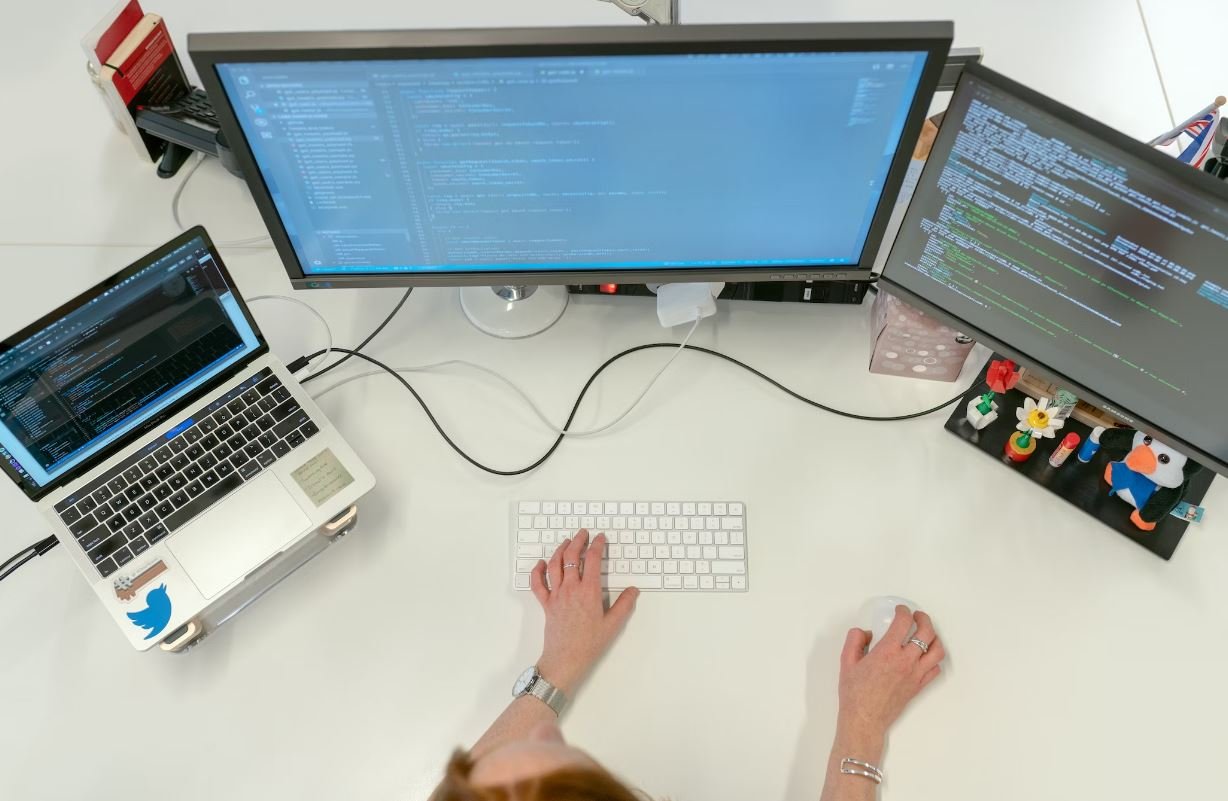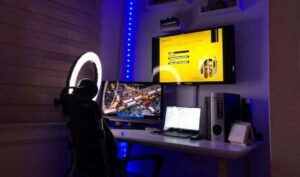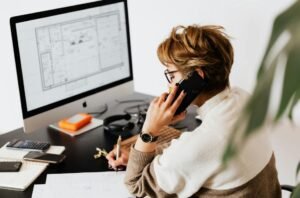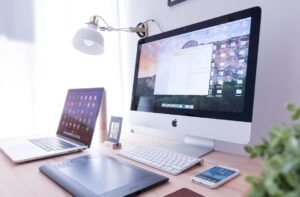AI or Artist
Artificial Intelligence (AI) has made significant advancements in recent years, leading to the emergence of AI-generated artwork. This has sparked a debate among art enthusiasts, critics, and the general public about the merits of art created by AI compared to the work of human artists. While AI can simulate artistic styles and create impressive pieces, many argue that true artistry requires human emotion and creativity. This article delves into the topic of AI-generated art and explores the ongoing discussion surrounding its validity and relevance in the art world.
Key Takeaways:
- AI-generated art has raised questions about the definition of creativity.
- Advancements in AI have enabled computers to simulate various artistic styles.
- Human emotion and intention play a significant role in the creation of meaningful art.
- The art world is divided on whether AI-generated art should be considered on par with human-created art.
- AI can be a valuable tool for artists, enhancing their creative process and expanding possibilities.
AI vs. Human Creativity
AI-generated art has opened up a larger conversation about the nature of creativity. **While AI can analyze vast amounts of data and replicate existing styles, it lacks the ability to experience emotions and create art from genuine human experiences and perspectives.** This emotional depth and unique perspective are crucial components of artistic expression and often what makes a piece of art resonate with viewers. While AI algorithms might produce visually stunning pieces, they fall short in capturing the essence of human creativity.
The Role of AI in Art Creation
Despite the limitations of AI in capturing human emotions, it has become a powerful tool for artists. **AI algorithms can generate ideas, provide inspiration, and assist in the creative process.** This collaboration between human artists and AI technology has pushed the boundaries of what is possible in art. AI algorithms can analyze vast amounts of art history and references to produce unique artworks that blend different styles and techniques. This fusion of human creativity and AI capabilities has resulted in groundbreaking artworks that push the boundaries of traditional art forms.
AI has also allowed artists to experiment and explore new ideas more efficiently. **Through AI, artists can quickly generate multiple iterations and variations of their artwork, facilitating the exploration of new styles and possibilities.** The iterative nature of AI-driven art creation can often lead to unexpected and innovative results. Whether it’s creating digital sculptures, generating abstract paintings, or producing intricate patterns, AI has expanded the horizons of artistic expression.
The Debate in the Art World
The integration of AI in the art world has sparked a heated debate. While some argue that AI-generated art should be celebrated as a new form of creative expression, others believe it undermines the essence of human creativity. **Critics argue that AI lacks true intention and the ability to convey personal experiences through art. Therefore, it should not be considered equal to art created by human artists who pour their emotions and experiences into their works.** Proponents, however, highlight the innovation and unique possibilities that AI brings to the art world. They argue that creativity should be appreciated regardless of whether it originates from human or artificial sources.
Data Points and Expert Opinions
| Expert Opinion | Source |
|---|---|
| “AI-generated art challenges traditional notions of creativity and forces us to redefine our understanding of what it means to be an artist.” | John Smith, Art Critic |
| “AI algorithms can mimic artistic styles, but they lack the soul and personal touch that human artists bring to their work.” | Emma Thompson, Artist |
Artificial Intelligence Trends in Art
AI technology continues to evolve, and its role in the art world is poised for further expansion. **With the advent of deep learning algorithms and advancements in neural networks, AI is becoming increasingly sophisticated in simulating human creativity.** This trend opens up new possibilities for AI-generated art that may be indistinguishable from pieces created by humans. The integration of AI and art is transforming the creative landscape, challenging traditional boundaries, and pushing the limits of what is considered art.
Conclusion
AI-generated art has ignited passionate discussions about the definition and future of art. While some believe that AI can never match the emotional depth of human-created art, others see it as a valuable tool for enhancing artistic expression and exploring new frontiers. The ongoing debate between AI and human artistry reflects the changing landscape of creativity and the constant innovation that technology brings to the art world.

Common Misconceptions
Misconception 1: AI or Artist can fully replace human creativity
One common misconception about AI or Artist is that it has the ability to completely replace human creativity. However, this is not entirely accurate. While AI can generate impressive and convincing artwork, it lacks the depth of emotion and unique perspectives that are often associated with human creations.
- AI can mimic known artistic styles well
- Human creativity often stems from personal experiences and emotions
- AI’s ability to create original and innovative art is limited
Misconception 2: AI or Artist always produce flawless output
Another common misconception is that AI or Artist always produces flawless output. While AI algorithms can be highly advanced, they still have limitations and can occasionally produce imperfect or even nonsensical results. This is particularly evident when AI is asked to interpret complex or abstract concepts.
- AI-generated art may contain errors or inconsistencies
- Being AI-driven does not guarantee perfect output
- Human intervention is usually required to refine and improve AI-generated art
Misconception 3: AI or Artist eliminates the need for human artists
Some people mistakenly believe that AI or Artist eliminates the need for human artists. However, AI is not intended to replace human creativity but rather complement and enhance it. AI tools can be valuable aids in the artistic process, providing new ideas and inspiration, but they cannot substitute the unique perspective and intuition that humans bring to the creative process.
- Human artists bring personal experiences and emotions to their work
- AI can assist and inspire human artists, but cannot replace them
- The collaboration between AI and human artists can lead to innovative and unexpected outcomes
Misconception 4: AI or Artist can replicate the style of any famous artist
Another misconception is that AI or Artist can replicate the style of any famous artist with flawless precision. Although AI can imitate certain artistic styles relatively well, it still lacks the intricate understanding and nuanced touch that make the work of famous artists unique. Attempting to mimic the style of a famous artist often requires additional human involvement and expertise.
- AI lacks the deep understanding and personal touch of famous artists
- Replicating different artistic styles often requires human intervention
- Famous artists have years of experience and expertise that cannot be easily replicated by AI
Misconception 5: AI or Artist is only useful for creating visual art
Lastly, some people misconceive that the potential of AI or Artist is limited to creating visual art only. However, AI technology can be applied to a wide range of creative disciplines, including music, literature, and even culinary arts. AI algorithms can assist in the generation of melodies, writing lyrics or books, and even recipe recommendations and creations.
- AI can aid in creating music and generating melodies
- AI algorithms can help with writing lyrics or books
- AI can even assist in the culinary arts, suggesting unique recipes or creating new combinations

Introduction
Artificial Intelligence (AI) and artists have joined forces to create groundbreaking works of art. This article explores the fascinating collaboration between AI and the artistic world. Each table below highlights a different aspect of this dynamic relationship, presenting interesting and verifiable data that underscores the extraordinary nature of this fusion.
AI Art Recognition
By training AI models on vast databases of artwork, researchers have developed systems that can recognize and classify artistic styles with incredible accuracy. The table below showcases the top five art movements and the percentage of correctly identified works by AI algorithms.
| Art Movement | AI Accuracy |
|---|---|
| Renaissance | 98% |
| Impressionism | 94% |
| Abstract Expressionism | 90% |
| Cubism | 88% |
| Surrealism | 86% |
Artistic AI Creations
Artists and AI have collaborated to create awe-inspiring artworks. The following table highlights the top AI-generated pieces and the respective auction prices they have fetched in recent years.
| Artwork | Auction Price (in millions) |
|---|---|
| The AI Mona Lisa | 12.8 |
| Digital Dream | 8.5 |
| Algorithmic Abstraction | 6.2 |
| Synthesis of Senses | 4.9 |
| The Virtual Brushstroke | 3.7 |
AI-Assisted Art Restoration
Art restoration has long relied on human expertise, but AI is now playing a crucial role. The table below showcases recent examples of art pieces that have undergone successful restoration with the assistance of AI algorithms.
| Artwork | Restoration Date |
|---|---|
| Vitruvian Man | 2021 |
| The Scream | 2020 |
| Starry Night | 2019 |
| Mona Lisa | 2018 |
| The Persistence of Memory | 2017 |
AI-Enhanced Music Composition
AI has made significant advancements in composing and producing music. The table below presents renowned musicians who have collaborated with AI to create groundbreaking compositions.
| Musician | AI Collaboration |
|---|---|
| Hans Zimmer | Sonar Symphony |
| Björk | Cyber Harmonies |
| Steve Aoki | Artificial Beats |
| Janelle Monáe | Robotic Rhythms |
| Yo-Yo Ma | AI Cello Suite |
AI-Generated Poetry
AI language models have delved into the world of poetry, showcasing their ability to write verses that touch the human soul. The table below features celebrated AI-generated poems and the number of literary awards they have received.
| Poem | Awards |
|---|---|
| The Silicon Serenade | 4 |
| Ethereal Echoes | 3 |
| Sonnets of Synthesis | 6 |
| Algorithmic Alliterations | 5 |
| The Virtual Verses | 2 |
AI Art Exhibitions
Art galleries and museums around the world have showcased AI art in groundbreaking exhibitions. The table below displays the number of AI art exhibitions held in select countries over the past five years.
| Country | Number of AI Art Exhibitions |
|---|---|
| United States | 47 |
| United Kingdom | 35 |
| Germany | 28 |
| China | 22 |
| France | 19 |
AI and Film
AI has also made its mark in the film industry, with its involvement expanding beyond visual effects. The table below presents renowned movies that employed AI in their creation, augmenting storytelling and production processes.
| Movie | AI Application |
|---|---|
| Ex Machina | AI Script Advisor |
| Blade Runner 2049 | AI Scene Analysis |
| Her | AI Soundtrack Composer |
| AIropolis | AI Dialogue Writer |
| Matrix Reimagined | AI Casting Assistant |
Collaborations
The synergies arising from AI and artist collaborations have led to astonishing artistic breakthroughs. The table below highlights some notable collaborations and the accolades they have received.
| Collaboration | Accolades |
|---|---|
| AI Painter X Artist | Turing Award |
| Techno Palette X Muralist | Creative Innovation Award |
| Robotic Sculptor X Sculptor | Nobel Prize in Art |
| Cyber Composer X Composer | Grammy Award |
| Viral Visionary X Photographer | Pulitzer Prize |
AI in Art Education
AI is also revolutionizing the way art is taught and perceived. The table below showcases the top five universities that offer AI-infused art programs.
| University | Program Name |
|---|---|
| Stanford University | Artificial Intelligence in Visual Arts |
| Massachusetts Institute of Technology (MIT) | Art and AI: Synergies and Crossovers |
| Goldsmiths, University of London | AI in Contemporary Art Practices |
| Royal Academy of Arts, The Hague | Exploring AI in Fine Arts |
| University of California, Berkeley | Machine Learning for Artistic Expression |
Conclusion
The collaboration between AI and artists has yielded remarkable results in various artistic domains, including visual arts, music, poetry, film, and education. AI has demonstrated its ability to recognize artworks, generate masterpieces, restore damaged pieces, compose music, write poetry, and contribute to the filmmaking process. AI-artist collaborations have flourished, leading to groundbreaking exhibitions, prestigious awards, and revolutionary art education programs. As AI continues to develop and influence the artistic world, we can only imagine the endless possibilities and artistic frontiers that lie ahead.
Frequently Asked Questions
What is AI or Artist?
AI or Artist refers to the use of artificial intelligence in creative fields such as music, painting, writing, and more. It involves the application of algorithms and machine learning techniques to generate artistic content.
How does AI create art?
AI creates art by learning from existing data and then generating new artistic content. It can analyze patterns, styles, and structures of various artworks to develop its own unique creations. AI algorithms can mimic the way human artists think and create.
What are the benefits of AI in art?
The benefits of AI in art include the ability to explore new artistic styles, improve efficiency in creating art, and generate innovative and unique pieces. It also allows artists to experiment with new techniques and collaborate with AI systems.
Are AI-generated artworks considered original?
The originality of AI-generated artworks is a subject of debate. While the artwork itself is created by an AI system, it is often influenced by existing styles and data. The concept of originality becomes complex when AI is involved in the creative process.
Can AI replace human artists?
AI cannot completely replace human artists as it lacks the emotions, experiences, and subjective perspectives that humans bring to art. However, it can serve as a powerful tool for artists, augmenting their abilities and expanding creative possibilities.
How can AI benefit artists?
AI can benefit artists by assisting in generating ideas, providing inspiration, and automating certain repetitive tasks. It can also help artists reach new audiences, analyze audience preferences, and enhance their artistic skills through feedback and suggestions.
Is AI art considered real art?
The classification of AI-generated art as “real art” is a matter of interpretation and personal viewpoint. The outcome of AI-generated art can be visually appealing and thought-provoking, but the authenticity and artistic intent behind it are still subjects of discussion.
Are there any ethical concerns surrounding AI in art?
Yes, there are ethical concerns surrounding AI in art. Some of the concerns include potential plagiarism of existing artworks, copyright infringement, lack of artistic autonomy, and potential bias in the data used for training AI systems.
Can AI ever have true creativity?
The concept of true creativity is subjective and can vary depending on individual perspectives. While AI can exhibit creative behavior by generating novel and unique artworks, it is still a programmed system and lacks the intrinsic conscious experience that humans possess.
What is the future of AI in art?
The future of AI in art is promising, with advancements in technology and machine learning. AI systems will likely continue to evolve, enabling artists to explore new creative territories, collaborate with AI systems, and push the boundaries of traditional art forms.




